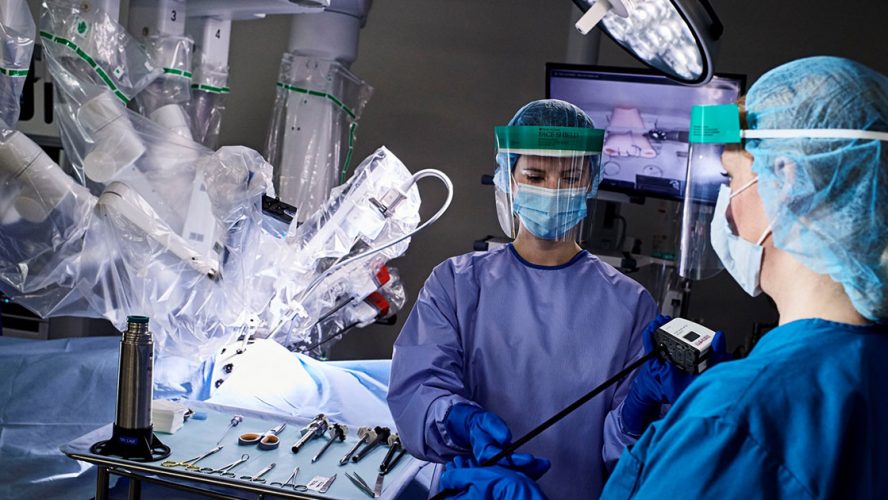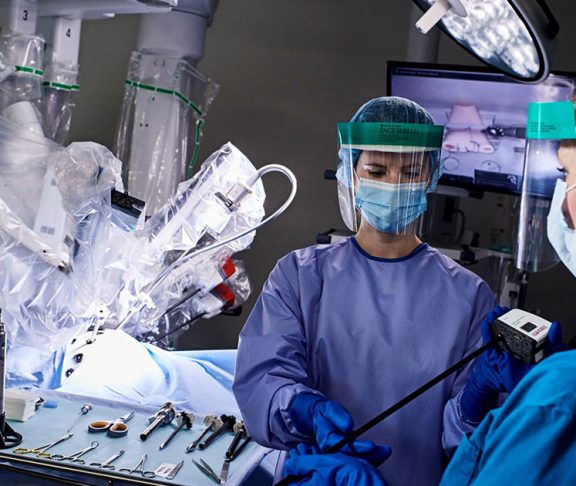Only 19 percent of surgeons in the United States are female, but women in the industry say that that gender gap may be starting to close. They’re also seeing more women in professional roles inside and outside of the operating room.
“We are seeing women come to the table and their voices are being heard,” says Myriam Curet, executive vice president and chief medical officer of Intuitive Surgical, Inc., a global technology leader in minimally invasive care and the pioneer of robotic-assisted surgery. “I have seen a lot more women speaking up in the OR.”
Curet recalls very few female surgeons in the industry when she began her surgical career more than two decades ago. And, while she’s proud to see women being welcomed and even celebrated in the industry, she’s even more proud to see women represented across the field.
“Women are finding their voice at a time when companies and engineers are realizing they need to develop a broader range of users,” she says.
Innovating requires human understanding
Twenty years ago, Intuitive launched one of the world’s first robotic-assisted surgical systems — the da Vinci®. Since then, surgeons have performed more than 6 million procedures using the system.
“Every surgeon is different. Every patient is unique. Physical size or strength should not be a factor in the outcome,” stated Curet. “That’s why it’s so important to have people of different genders involved in the R&D process .”
But it wasn’t always that way.
“Surgery has traditionally been done by men so OR tools have mostly been designed with men in mind,” says Curet, noting, for example, that the same heavy surgical clamps used by larger men were also used by petite women.
Robotic-assisted surgical systems help address ways for doctors, regardless of gender or size, to perform some procedures more comfortably and efficiently. With the da Vinci surgical system, for example, surgeons perform procedures seated at a console in the OR, not standing, which can be helpful during long procedures or many shorter procedures in a day.
The console can be adjusted to accommodate surgeons of different sizes and body types.
“You’re not reaching over the patient or worrying about having long enough arms,” says Curet, who notes the robotic technology has extended her surgical career.
As for the heavy clamps? “It can be done by pushing down on a foot pedal, similar to the gas pedal in a car,” said Curet of the da Vinci system.
Empowering women in surgery with data
Innovations in tech, such as robotics and big data analytics are also helping level the playing field.
Darla Hutton, vice president of U.S. commercial marketing and custom hospital analytics at Intuitive, spent a year-and-a-half talking to surgical societies and female surgeons about their experiences. Hutton learned that they often struggled to be heard, to get referrals, and to receive consideration as the primary surgeon.
“We work with surgeons to help them understand how to communicate their value through data,” says Hutton.
“We are helping women in surgery be heard,” she continued, referring to the company’s effort to support women in different roles across robotic-assisted surgery.
Intuitive has created a strong community of women in the surgical field and has held educational conferences with session topics that include Women in Research & Development, Women in Clinical Affairs for Publications, and Women as Podium Speakers.
Internally, Intuitive is strongly committed to recruiting diverse employees and helping women advance their careers. “We can help other women rise in the company,” says Hutton. “It’s important that women have women’s backs and that we’re sending the elevator down for others to come up.”


